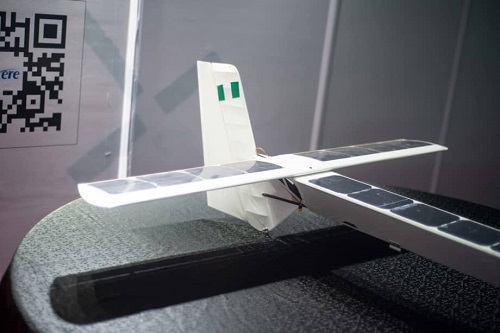-Felix Douglas
The DroneTex Conference 2025 edition took place recently in Lagos with companies showcasing recent technologies in the aviation space. The conference is Africa’s foremost platform for drone and aerial systems innovation, featuring companies with Unmanned Traffic Management (UTM) and Artificial Intelligence (AI) presenting its groundbreaking solutions for low-altitude airspace coordination, drone safety enforcement, and scalable UTM infrastructure built for emerging economies.
One of the companies that showcased its technologies is Ere Aeronautics with recent AI mechanism to monitor pipelines.
Chief Executive Officer (CEO) of Ere Aeronautics, Ebikekeme Ere, gave a presentation at the conference on pipeline surveillance technologies and its potential trust aligned for immediate responses to issues as they arise, combining real time data with AI analytics enhance efficiency.
He said dashboards with data offer assistance to operators to evaluate conditions quickly and effectively reducing response time to incidents and improving overall security of pipeline networks.
Emerging Technologies
Ere Explained That Technologies Like Drones And IOT Sensors Are At The Forefront Of Pipeline Surveillance. Drones Facilitate Inspections While IOT Sensors Provide Precise Measurements, Ensuring Comprehensive Monitoring Infrastructure.
Aerial Vehicles Can Easily Take Off And Landing By Extensive Aerial Coverage For Pipeline Monitoring. Their Ability To Operate In Diverse Terrains That Are High In Solution Significantly Improves Situational Awareness And Response Management To Potential Threats.
Artificial Intelligence
Ere stated further that AI and computer visions are pivotal for identifying animal anomalies in pipeline data. These technologies analyze data in real time, enabling rapid detection encroachments and rational failures, thus enhancing the overall state and reliability of pipeline operations.
Liner or light detection arranging and powerful hyperspectral camera sensors offer advanced capabilities for detection and environmental monitoring.
These technologies provide precise measurements and multi spectral and data analysis, enabling operators to assess pipeline integrity and surrounding conditions proactively.
Edge Computing and Cloud Integration
The Ere Aeronautics CEO pointed out that edge computing facilitates real time data processing at the source reducing latency and bandwidth usage, integrated with cloud services, this architecture supports seamless data management aligned for scalable solutions and effective centralized monitoring of pipeline operations.
Real World Applications are Pipeline Surveillance
Digital surveillance technologies are applicable across sectors such as oil and gas, water utilities and telecommunications, they enable real time monitoring depth and environmental impacts, leading to faster response times and reduce negative issues. Enabled case involved monitoring of the 40 kilometer right of way of oil gas and oil and gas pipelines from Owomanma to Ibuche using drones, and it’s a spectral technology.
This application reduced heat protection type from thirty six hours to three hours, demonstrating the effectiveness of modern surveillance methods.
Advancement in technology has resulted in an 80% reduction in false alarms using AI and pipeline of monitoring. Enhanced systems allows for predictive maintenance, rapid assessments, improving operational safety and capabilities.
Why Make the Shift to Digital Surveillance?
Digital surveillance provides faster detection and response times to dress, reducing operational costs, significantly enhanced safety, and regulatory compliance assisting many organizations to manage risk effectively in an evolving landscape.
Road Ahead to Innovations and automation
Ere stated further that emerging technologies like swamp, drone technology will revolutionize monitoring processes, allowing for automation, improved efficiency. Satellite AI, hybrid surveillance offers unprecedented coverage, further enhancing real time analytics and responses to pipeline incidents.
Integration of advanced technologies, including AI and analytics are essential for security and critical infrastructure. A combination of drones, sensors and real time data analysis ensures robust monitoring capabilities that can adapt to new trends.
Implementation Strategies
Prioritizing digital transition requires a comprehensive strategy to organisation specific needs, engaging stakeholders and leveraging existing technologies ensures a smoother integration and maximizes benefits of digital surveillance.


Comment here